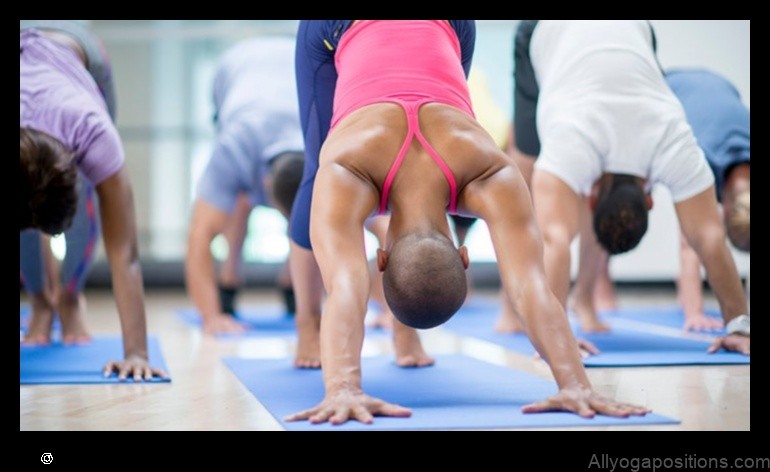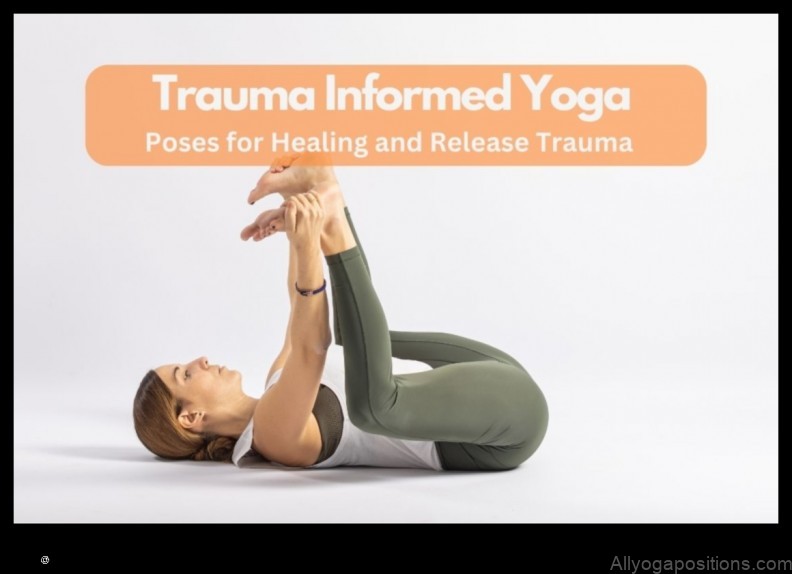
Yoga for Trauma Healing: Creating a Safe Space on the Mat
Trauma is a serious mental health issue that can affect people of all ages. It can be caused by a variety of events, such as physical or sexual abuse, natural disasters, or war. Trauma can lead to a number of problems, including anxiety, depression, post-traumatic stress disorder (PTSD), and difficulty sleeping.
Yoga is a mind-body practice that can help people to heal from trauma. Yoga can help to reduce stress, improve mood, and increase mindfulness. It can also help people to connect with their bodies and to feel more grounded.
If you are interested in using yoga to heal from trauma, it is important to find a qualified teacher who can help you to create a safe and supportive environment for yourself in which to practice. You should also make sure that you are not pushing yourself too hard. It is important to listen to your body and to stop if you feel uncomfortable.
Yoga is a powerful tool that can help people to heal from trauma. It can help people to manage their symptoms, to connect with their bodies, and to find peace and healing.

Types of Yoga for Trauma Healing
There are many different types of yoga that can be helpful for trauma healing. Some of the most common types of yoga for trauma healing include:
- Yin yoga
- Restorative yoga
- Hatha yoga
- Iyengar yoga
- Vinyasa yoga
Each type of yoga has its own unique benefits. Yin yoga is a slow-paced, gentle type of yoga that focuses on stretching and relaxation. Restorative yoga is a type of yoga that uses props to help you to relax and release tension. Hatha yoga is a more vigorous type of yoga that combines poses with breathing exercises. Iyengar yoga is a type of yoga that focuses on alignment and precision. Vinyasa yoga is a flowing type of yoga that combines poses with breath.
It is important to find a type of yoga that you enjoy and that feels safe and supportive for you. You may need to try different types of yoga before you find one that you click with.
Tips for Practicing Yoga for Trauma Healing
If you are new to yoga, it is important to start slowly and to listen to your body. You should not push yourself too hard. It is important to find a qualified teacher who can help you to create a safe and supportive environment for yourself in which to practice.
Here are some tips for practicing yoga for trauma healing:
- Start with gentle poses and gradually increase the intensity as you feel comfortable.
- Focus on your breath and on the sensations in your body.
- Listen to your body and stop if you feel uncomfortable.
- Be patient with yourself and don’t expect to heal overnight.
- Make sure to practice yoga in a safe and supportive environment.
Yoga is a powerful tool that can help people to heal from trauma. It can help people to manage their symptoms, to connect with their bodies, and to find peace and healing. If you are interested in using yoga to heal from trauma, it is important to find a qualified teacher who can help you to create a safe and supportive environment for yourself in which to practice.
| Topic | Answer |
|---|---|
| Trauma healing | Yoga can help with trauma healing by providing a safe space to process emotions, relieve stress, and connect with the body. |
| Yoga | Yoga is a mind-body practice that combines physical postures, breathing exercises, and meditation. |
| Safe space | A safe space is a place where people feel comfortable and respected, and where they can express themselves without judgment. |
| Mindfulness | Mindfulness is the practice of paying attention to the present moment, without judgment. |
| Meditation | Meditation is a practice that involves focusing the mind on a single object or thought. |

II. What is trauma?
Trauma is a deeply distressing experience that can have lasting effects on a person’s physical, emotional, and mental health. Traumatic events can include natural disasters, accidents, war, abuse, or any other event that causes a person to feel intense fear, helplessness, or horror.
Trauma can cause a variety of symptoms, including flashbacks, nightmares, anxiety, depression, difficulty sleeping, and difficulty concentrating. It can also lead to problems with relationships, work, and school.
Trauma is a serious condition that can be treated with therapy, medication, and other forms of support. Yoga can be a helpful complementary therapy for trauma healing, as it can help to reduce stress, anxiety, and pain, and improve mood and sleep.
III. How does yoga help with trauma?
Yoga can help with trauma in a number of ways. It can help to:
* Reduce stress and anxiety
* Improve mood and self-esteem
* Increase mindfulness and awareness
* Promote relaxation and healing
* Provide a safe and supportive space to process trauma
Yoga can also help to strengthen the body and mind, which can give people who have experienced trauma a sense of empowerment and control.
IV. Types of yoga for trauma healing
There are many different types of yoga that can be helpful for trauma healing. Some of the most common types include:
Yoga nidra: This type of yoga involves deep relaxation and meditation. It can help to reduce stress and anxiety, and it can also help to improve sleep.
Restorative yoga: This type of yoga involves gentle poses that are held for long periods of time. It can help to relieve muscle tension and pain, and it can also promote relaxation and healing.
Mindfulness-based yoga: This type of yoga combines yoga with mindfulness meditation. It can help to increase awareness of the present moment, and it can also help to reduce stress and anxiety.
Tantra yoga: This type of yoga focuses on the union of body, mind, and spirit. It can help to increase energy and vitality, and it can also promote healing and transformation.
The best type of yoga for trauma healing will vary depending on the individual. Some people may find that one type of yoga is more helpful than another. It is important to experiment with different types of yoga until you find one that you enjoy and that helps you to feel better.
V. Benefits of yoga for trauma healing
Yoga can provide a number of benefits for people who are recovering from trauma. These benefits include:
- Reduced stress and anxiety
- Improved mood
- Increased self-awareness
- Improved sleep
- Enhanced physical and mental health
Yoga can also help people to develop coping mechanisms for dealing with difficult emotions, and to create a sense of safety and relaxation.
If you are interested in learning more about how yoga can help with trauma healing, please consult with a qualified yoga instructor or therapist.
II. What is trauma?
Trauma is a deeply distressing or disturbing experience that can have lasting effects on a person’s physical and mental health.
Trauma can be caused by a variety of events, including natural disasters, accidents, acts of violence, or war.
Trauma can lead to a number of symptoms, including anxiety, depression, nightmares, flashbacks, and difficulty sleeping.
Trauma can also make it difficult to cope with everyday stressors and to form healthy relationships.
If you have experienced trauma, it is important to seek help from a mental health professional.
VII. Tips for practicing yoga for trauma healing
Here are some tips for practicing yoga for trauma healing:
- Start slowly and gradually increase the intensity of your practice as you feel comfortable.
- Listen to your body and mind and avoid pushing yourself too hard.
- Choose poses that feel good and that allow you to relax and connect with your breath.
- Be mindful of your thoughts and emotions as you practice yoga and allow them to come and go without judgment.
- Create a safe and supportive environment for yourself in which to practice yoga.
Yoga can be a powerful tool for healing from trauma, but it is important to approach it with care and respect. If you are experiencing trauma, it is important to seek professional help in addition to practicing yoga.
Common myths about yoga for trauma healing
There are a number of common myths about yoga for trauma healing that can prevent people from seeking out this type of therapy. These myths include:
- Yoga is only for people who are physically fit.
- Yoga is too passive to be helpful for trauma healing.
- Yoga is only for women.
- Yoga is a religion.
None of these myths are true. Yoga can be beneficial for people of all ages, genders, and fitness levels. It is not a passive activity, and it can help people to connect with their bodies and minds in a way that can be very healing. Yoga is not a religion, and it can be practiced by people of all faiths or no faith at all.
If you are interested in learning more about yoga for trauma healing, there are a number of resources available to you. You can find classes at your local yoga studio, or you can learn more about the practice online. There are also a number of books and articles that can help you to understand how yoga can help you to heal from trauma.
IX. Resources for trauma healing
Here are some resources that can help you with trauma healing:
- Theravive: This website offers a variety of resources for trauma healing, including online therapy, articles, and videos.
- PTSD National Center: This website is a resource for veterans and their families who are struggling with PTSD. It offers information on treatment options, support groups, and coping mechanisms.
- National Alliance on Mental Illness: This organization provides support and resources for people with mental illness, including trauma. It offers a free helpline, online support groups, and a variety of educational materials.
- American Psychological Association: This website offers a variety of resources for trauma healing, including research articles, fact sheets, and a free toolkit for coping with trauma.
FAQ
Q: What is trauma?
A: Trauma is a deep emotional wound that can be caused by a single event or a series of events. It can be physical, emotional, or psychological.
Q: How does yoga help with trauma?
A: Yoga can help with trauma by providing a safe and supportive space for healing, teaching coping mechanisms, and helping to regulate the nervous system.
Q: What are the different types of yoga for trauma healing?
A: There are many different types of yoga that can be helpful for trauma healing, including:
* Trauma-informed yoga
* Yin yoga
* Restorative yoga
* Mindfulness-based yoga
* Meditation-based yoga
Table of Contents
Maybe You Like Them Too
- Yoga and Ayurvedic Self-Care Practices A Guide to Well-Being
- Yoga for Teens 5 Poses to Build Emotional Resilience
- Meditation and Self-Discovery Unravel the Layers of Your Being
- Yoga for Strength Power Poses to Build Strength, Flexibility, and Confidence
- Mindfulness Meditation in Yoga A Guide to Stilling the Mind and Finding Inner Peace
